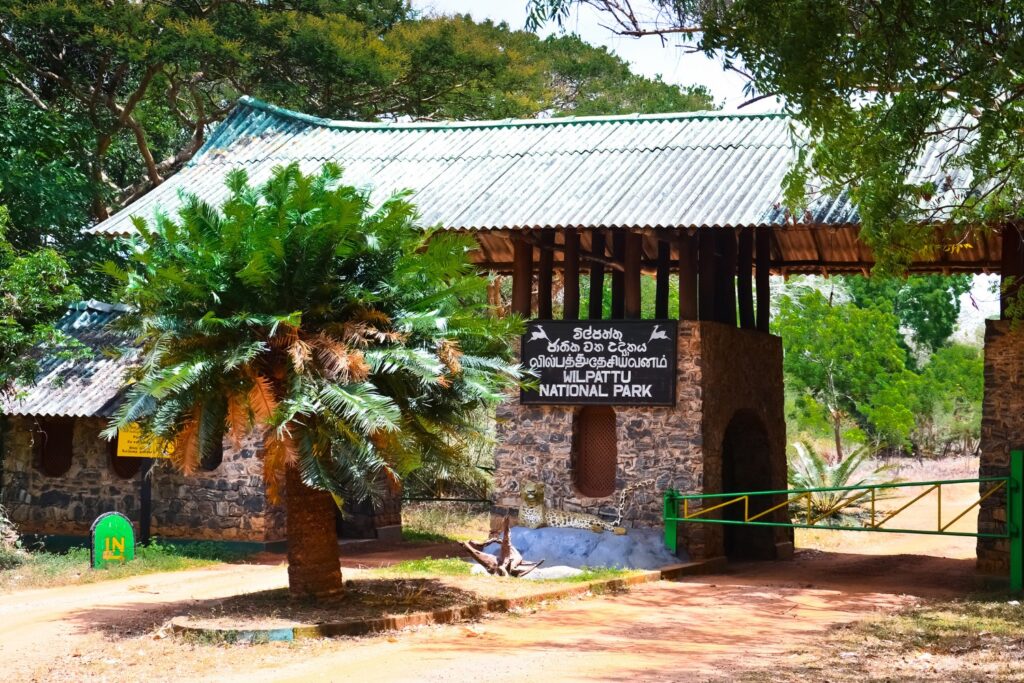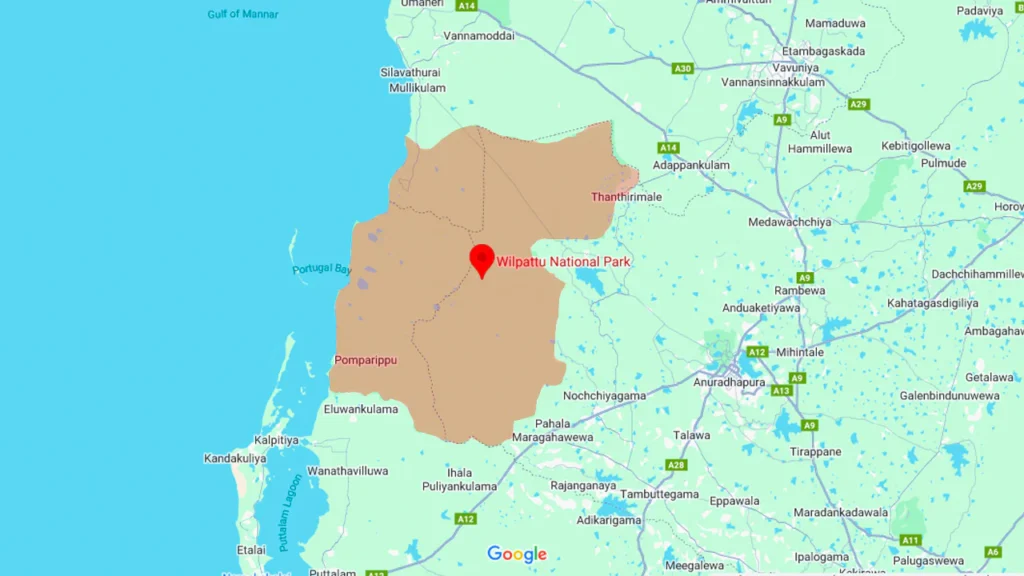Wilpattu National Park
VVisit Wilpattu National Park for a true safari adventure in Sri Lanka. As the country’s largest national park, Wilpattu is famous for its natural lakes (called “villus”) and leopards. Spot elephants, sloth bears, and deer walking through dense forests and open grasslands. With fewer crowds than Yala national park, Wilpattu offers a peaceful, authentic safari experience.

History of Wilpattu National Park
Wilpattu National Park has a rich history. A long time ago, it was part of an ancient kingdom, and you can still find old ruins hidden in the Wilpattu National Park.
In the early 1900s, the British made it a protected area to save the animals. By 1938, it became one of Sri Lanka’s very first national parks.
Early days, people used to hunt in the park, but now it’s a safe place for wildlife—like Sri Lankan leopards, elephants, and birds. What makes Wilpattu National Park special are its “villus”, the beautiful lakes scattered around the park.
Today, it’s a quiet, wild place where nature thrives, and visitors come to see its unique beauty.
Where is Wilpattu Park Located?
Wilpattu National Park is in the northwest of Sri Lanka. It spreads across the North Western and Northern Provinces, about 180 kilometers from Colombo.
The closest main town is Anuradhapura, around 30-50 kilometers away. Many travelers stay there or in Puttalam before heading into Wilpattu for safaris.
Unlike Yala, Wilpattu doesn’t touch the coast, but it’s famous for its natural lakes called villus. These waterholes attract animals like leopards, elephants, and birds, making the park feel alive even in the dry season.

Wilpattu National Park: A Wild Paradise
Wilpattu National Park covers around 1,300 square kilometers in northwest Sri Lanka. It’s a mix of dense forests, grassy plains, and its famous villus – natural lakes that dot the landscape.
The park is a wildlife paradise with 31 mammal species, including:
Sri Lankan leopards (harder to spot than Yala, but thrilling!)
Elephants that love to bathe in the villus
Shy sloth bears
Massive mugger crocodiles
Birdwatchers can spot over 200 species, from colorful kingfishers to rare owls. While leopards here are more elusive, Wilpattu’s untouched feel makes every sighting extra special.
Wilpattu National Park Entrance Gates:
Hunuwilagama Entrance (Main Gate)
– Most popular gate for Zone A (best for leopards & elephants)
– Close to the park’s famous villus (lakes)
– 30km from Anuradhapura city
Eluwankulama Entrance
– Alternative gate for Zone B & C
– Less crowded, good for full-day safaris
– Higher chance to spot sloth bears
What Makes Wilpattu National Park Special?
Wilpattu isn’t as famous as Yala, but that’s part of its magic. Here’s why travelers love it:
A Wilder Leopard Experience
– Leopards here are shyer but more rewarding to spot.
– Fewer jeeps mean quieter, more exclusive sightings.
Unique “Villus” Lakes
– These natural waterholes attract elephants, crocodiles, and herds of deer.
– Perfect for photography – animals gather here at sunrise/sunset.
Rare Wildlife
– Spot sloth bears (even rarer than in Yala!), barking deer, and giant crocodiles.
– Over 200 bird species, including jungle fowl and painted storks.
Ancient Secrets
– Hidden 2,000-year-old ruins and temple remains (like “Kudiramalai”) – history meets wilderness.
Escape the Crowds
– No beaches, but dense forests and open plains make it feel untouched.
– Safaris here are peaceful – just nature, no jeep traffic jams.
For those who love adventure off the tourist trail, Wilpattu is Sri Lanka’s hidden gem.
